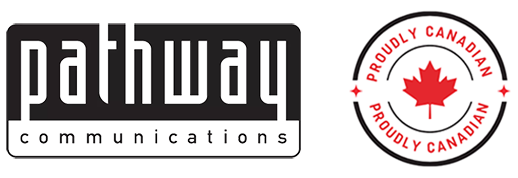(How not to get caught in) The Catch 22 of tech support economics.
‘After-market tech support’ was one of the big subjects of discussion at the recent Consumer Electronics Show (CES) – a global powerhouse gathering of consumer technologies. For good reason. With each new roll out of a high-end tech product or service comes the immediate question of customer support. It wasn’t always the case. Historically, the customer experience was second to product development and sales.
Today, managers are very aware that when it comes to brand loyalty and retention much of the responsibility falls upon tech support who have a direct line with customers more than any other department.
The time-to-market cycle for such products is short and development costs are high. As companies don’t often have internal technical skills to go at it alone, tie-ups and alliances are quite common. A typical end to end product or solution is an amalgam of several products lines. With new integrated technology comes inevitable bugs. Most first time customers will require some sort of support (technical being the most common) within the first 3 months of launch.
In Canada, growth in this sector comes with a caveat. 14,000 contact centers employ over half a million staff, about 3.4% of the total employed Canadian population. The number of contact centers and agent positions is expected to continue to grow at an impressive 20%. But profit margins have fallen over the past five years because of rising regulation and increased wage costs. So there you have it. Seemingly, a dichotomy right off the top.
If you are in this situation, what you are probably hoping for is an optimum level of qualified tech support agents to keep costs manageable and the wheels turning smoothly. You might even prefer an on premise environment for direct contact with your customers. Whether or not you have an infrastructure in place or are looking to outsource this function, here’s what you need to look into and what you might need:
- Are you considering only inbound tech support and information dissemination or an outbound marketing function as well? Any multiple point transaction capability? These simple questions will determine the core functions of your agents and staffing requirements. A strictly inbound technical support service will have dramatically different scheduling requirements than one that engages in both inbound support and outbound marketing functions. In order to maximize the utilization of all agents you should be using automation to predict high and low call times.
- A core team of supervisors, managers, analysts. Plus full time ITIL certified and trained agents who work during regular business hours and handle the bulk of calls, service multiple accounts and can also be assigned to a ticket end to end?
Points to consider:
It is very costly to have a core team and 24/7 support in-house. Daytime hours usually need 6-10 full time people.
For turnarounds and overnight shifts are you depending on full time CSR’s to fill in?
A 24/7 workforce can often lead to underutilized staff during low call volume hours.
You may be able to provide a higher level of service in-house with your own full time CSR’s but what options do you have if targets/SLAs are not met?
CSRs and supervisors account for 75% of total costs and average turnover rates are very high at 33 -51%. Most contact centres will tell you it’s hard to retain internal service desk employees since most consider this line of work transitional.
The Catch 22 is this: A well-staffed centre with ITIL trained tech support is the best way to achieve your business objectives. However, high staff turnover being the norm at most contact centers, rehiring and training translates into unpredictable net new costs. Thus the budget for a steady state call centre needs to include additional retention and talent acquisition costs, which are quite high and tend to surprise inexperienced and experienced contact centre leadership.
What helps is an internal HR function that enables corrective measures and new hires without affecting SLA’s. Outsourced contact centers that handle multiple clients are often better equipped to bear costs of rehires. Depending on how SLA’s are structured and the capability to recover costs if service is sliding, this can translate to tremendous cost savings through eliminating administrative expenses and continuity of service efficiency. Additionally, a scalable and flexible workforce can adjust to varying time zones and non-peak traffic hours.
- Contact centre automation technologies such as CTI and ITIL service management software for incident tracking and reporting systems are essential tools for building customer service efficiencies, documentation, and a knowledge base. These tools also provide access to backend systems and in case you want to hook up an ITIL feature with a CRM function.
Automation usage has increased over the past five years but still takes up a relatively small slice of budgets (2.6%-5.9%), and only 10% of contact centers fully utilized the tools. One reason could be the high cost of deployment and ongoing system maintenance.
Possible solutions:
There are several options for cloud based automation tools that could fit your budget and help you quickly and fully deploy an IT Service Management (ITSM) solution.
Keep in mind what automation for tech support entails and what you are looking for it to do for you.
A comprehensive platform can integrate business-process automation, help desk and customer service, incident management, non-telephony contacts such as email and online incoming tickets, sales & marketing and SLA support. Alternately, you can pick one that’s more specific to your needs.
An outsourced contact centre will have their own recommendations on the appropriate ITSM ticket processing tool. While the cost is built into the fee, you can benefit from the contact centre’s shared resources and economies of scale.
If you want to go with your own ticketing system, some outsourced contact centers are able to support different platforms. Besides, they have internal capabilities to fill in for shortcomings if your own tools don’t help achieve SLA targets. If you retain tier II and III support, your technicians can access the database and systems as required.
Finally, in evaluating true cost involved consider real estate, training, onboarding, total compensation, and infrastructure needed to support the support teams. And remember, although outsourcing is sometimes seen as a bad word, a good contact centre provider will help you achieve the desired coverage, language support, business objectives and service quality while ensuring your customized solution is ‘right sized’ and won’t end up billing you for unoccupied agent time.
Comments are closed, but if you would like to discuss efficiencies for your technical support contact centre email the pathway team ctogroup@pathcom.com


